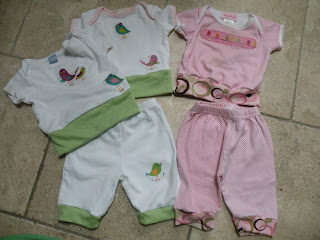When letting your little ones explore the wonders of playdough, think outside the box and find some common household items to use with the playdough. During our most recent playdough exploration, I gave my children chopsticks and containers with lids to experiment with.
To my delight and theirs, they found many uses for these tools.
Isabel was most interested in mushing and tearing the playdough with her fingers. She is beginning to discover how to roll the dough into a ball.
Giving your children common household tools to use with playdough expands their learning experiences.
Playing with playdough meets many MA DOE Guidelines for Preschool Learning Experiences:
Physical Development:
- Use a variety of tools and materials to build grasp-and-release skill.
- Build finger dexterity.
-Use eye-hand coordination, visual perception and tracking, and visual motor skills in play activities.
Visual Arts:
- Explore a variety of age-appropriate materials and media to create two and three-dimensional artwork.
If you are looking to save a little dough (pun intended), you can easily make your own playdough using recipes found here. The ingredients to make playdough will probably already be in your pantry. The first recipe listed is your typical run of the mill playdough, but there are a few fun varieties on the old standard as well.



















